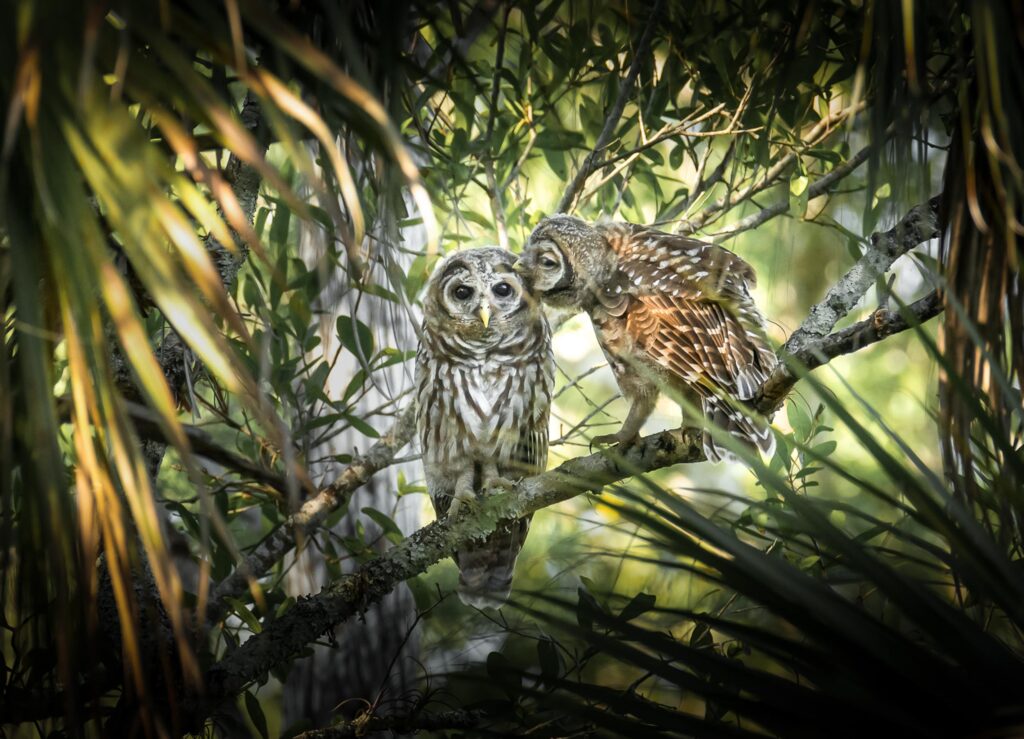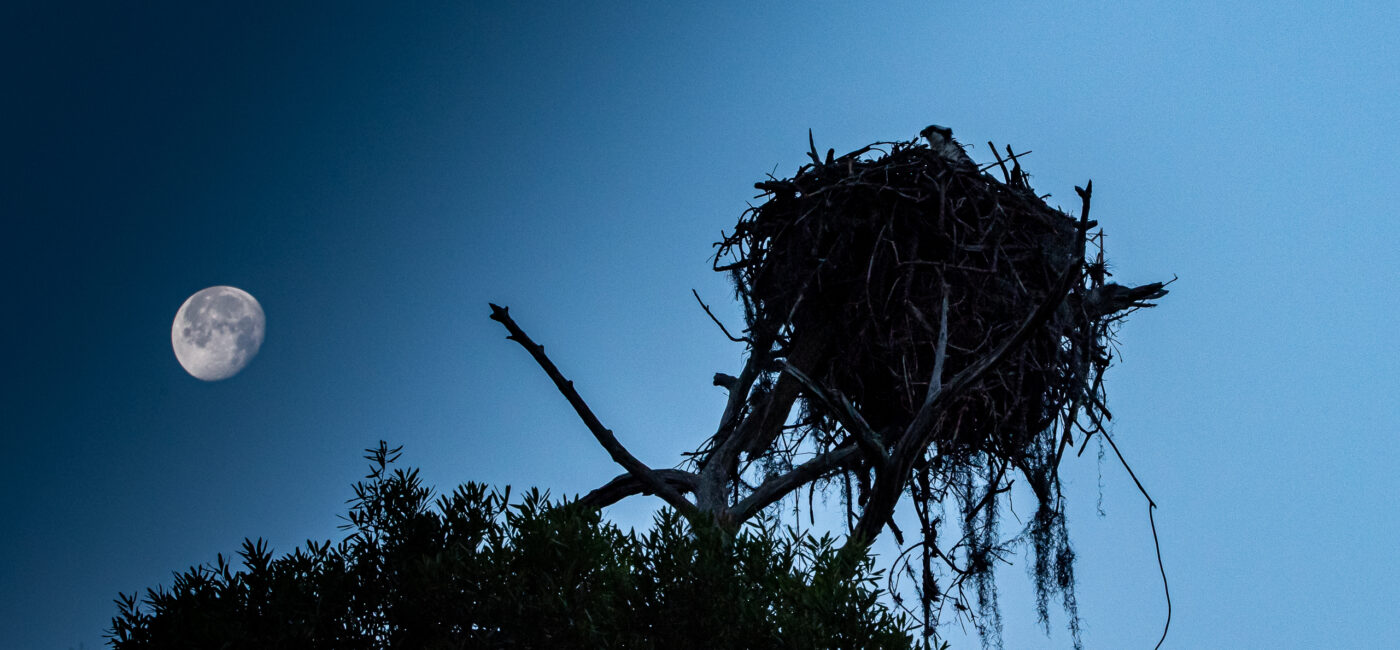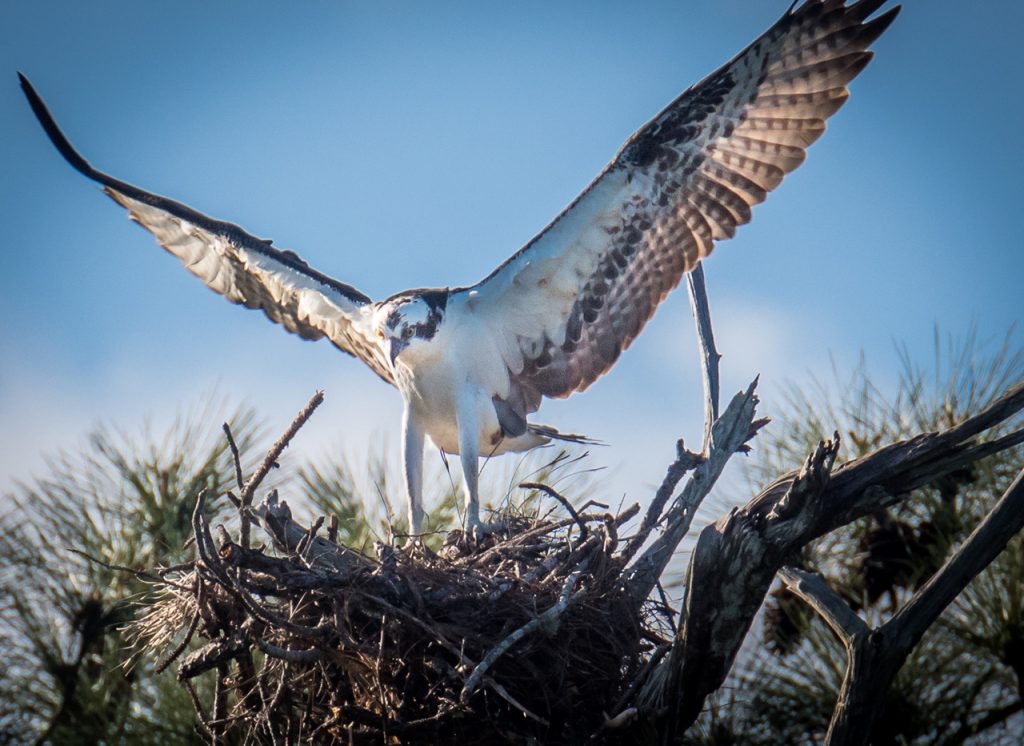
Ospreys and Owls: How to Find and Photograph
Ospreys and Owls are the raptors most common in South Florida where I hold my PhotoMasters Workshops. http://www.PhotoMastersWorkshops.com Finding and photographing them is challenging and fun.
First, lets talk about Ospreys. When they search for food, they fly high, usually out of camera range. You squint and watch them circle and take a few frames, but so far away, and so high-in-the-sky, you only get grainy and contrasty images. Then, “whooosh” in fraction of a second, they pull in their wings and dive bomb faster than can be followed looking through a telephoto lens. Now, you have a series of motion blurred rejects to delete!
So, how do we get a good Osprey shot? I can tell you that I did not achieve any success until, I read up on their habits and then observed them in the field for many months. I found two ways to capture Ospreys on camera.
First the easy way: In January through March Osprey pairs come together to build a nest and nurture their eggs and hatchlings. They always choose a dead tree about 25 feet high. The nests are easy to spot, about the size of a beach ball! Ospreys eat fish exclusively, so search along a river, beach or wetland. In the early mornings both the light is right and the Ospreys co-operate by flying in and out of the nest, spreading their wings to break speed. With a shutter speed of 1000 or more, you can capture every detail. Now, the harder shot.
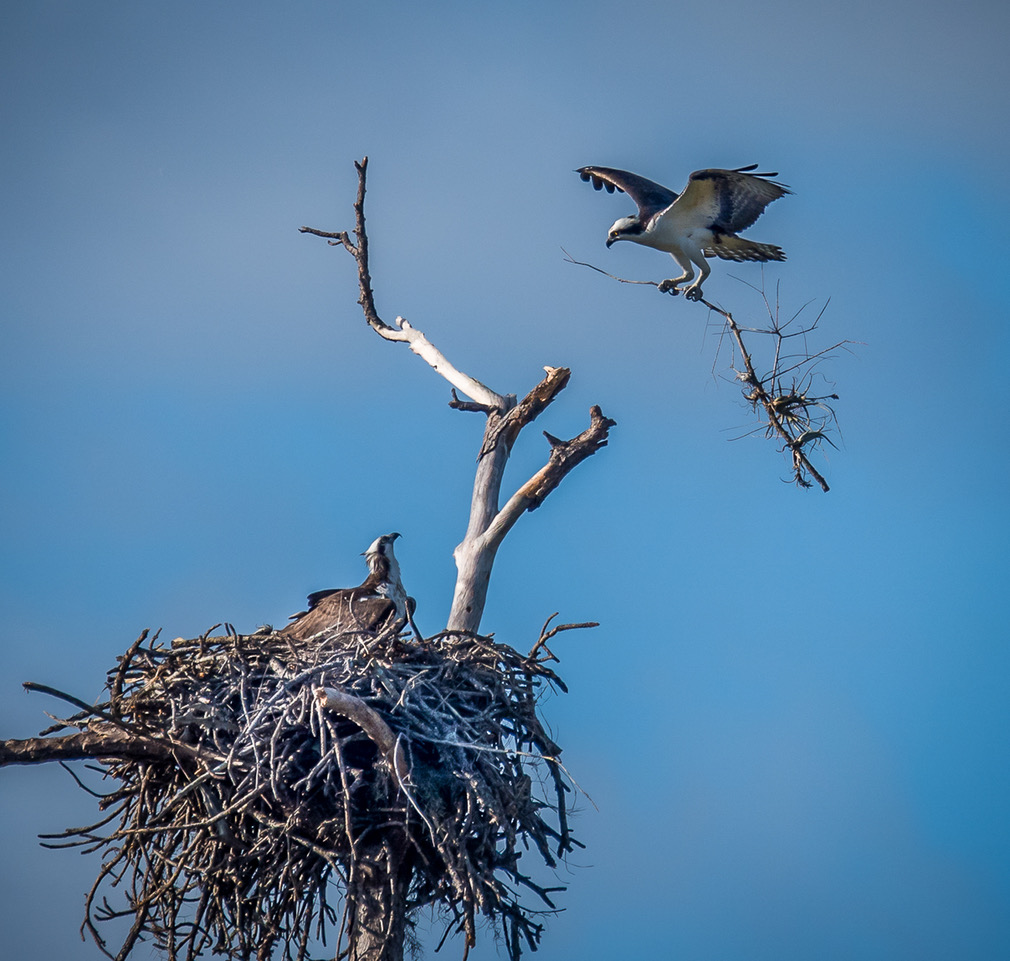
Ospreys dive incomprehensibly fast after fish, but (here’s the good news) they don’t dive more than a few feet below the water’s surface. With their sharp talons they grab the mullet, bass, mackerel, often so large and heavy, that they pause for a second while their wings generate the power to needed lift their prey! This is the perfect moment for back button focus, continuous high shooting and a good motor drive! A shutter speed of 2000 is best if you have enough light—water drops will be frozen mid-air and sharp as a tack. Keep the F-stop at F7 or higher to get both wingtips sharp.
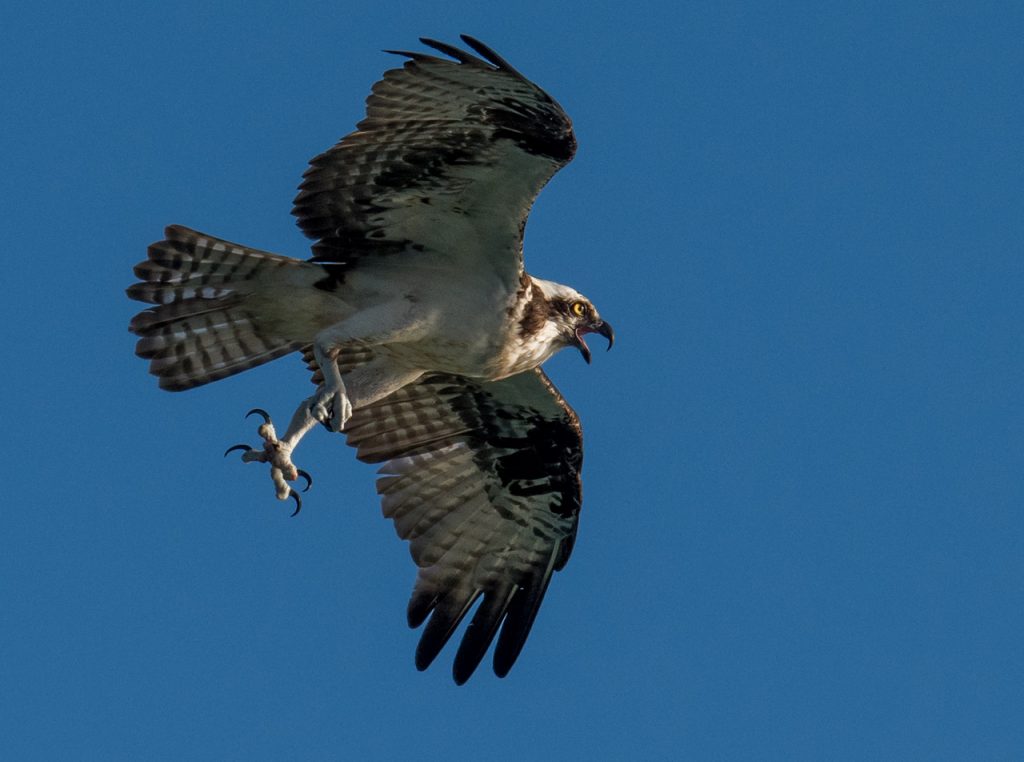
Owls are easy to photograph, hard to find. They tend to sit on branches ten to fifteen feet off the ground, well hidden under the canopy of big trees. Most often, you will “see” them first with your ears.
You may be lucky enough to hear their well-known “Whooo” call. I never have. In my experience, instead of hearing the owl, I hear the owl’s upset neighbors. What happens to me when hiking or biking on paths near a dense wetland forest, is that I listen for a large gathering of frantic songbirds darting from tree to tree, chirping and cawing as if they are angry. They are in fact angry and are announcing to the world, “There’s a raptor in my territory!” The noisy songbirds are a the signal to start inspecting every tree up close, starting from the base of the trunk and following out each branch, looking for a dark shape the size of a basketball.
Getting a good image of an owl is a matter of dealing successfully with low light. A good exposure in a dark forest will require a shallow depth of field and maybe an iso of up to 800. Owls will pose for you, slowly turning their head. Focus carefully on the head and eyes and shoot!.
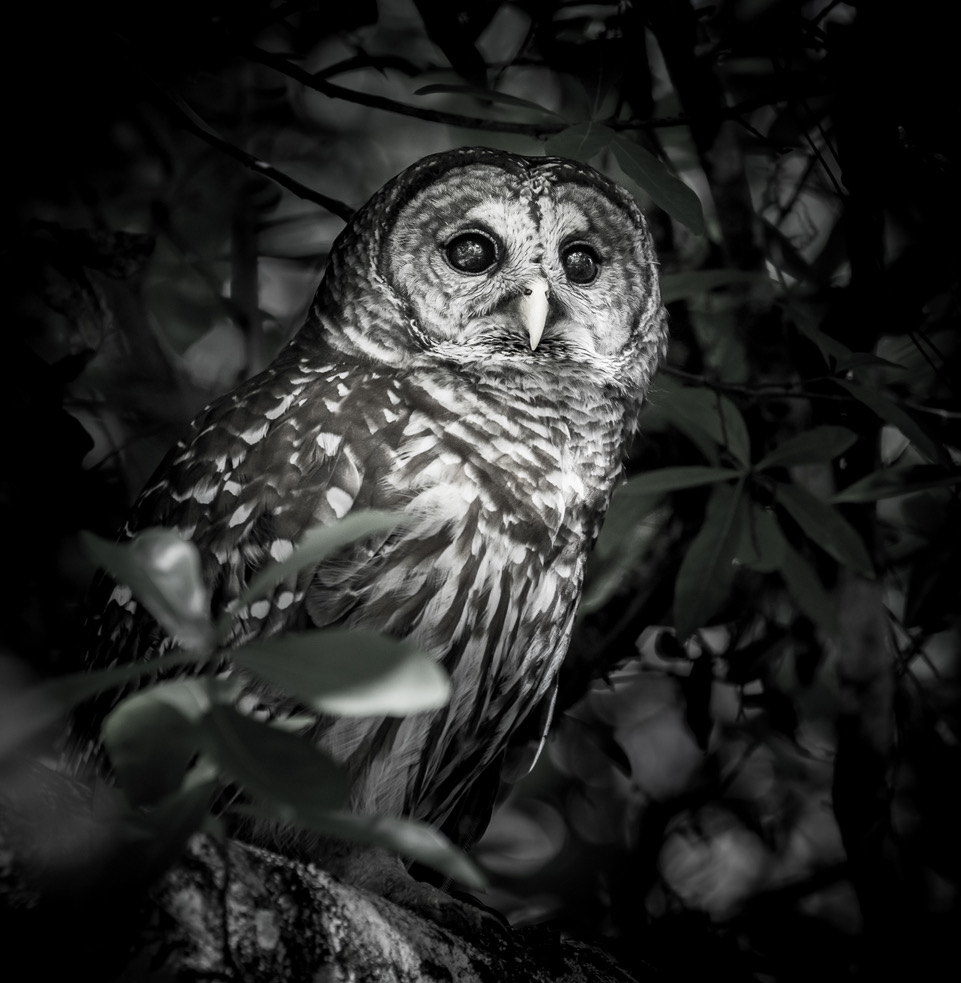
Bob Gibson leads Photo Masters Workshops in Palm Beach County, Florida. Owls are photographed at Riverbend Park, Jupiter, Florida. Osprey are photographed at both Riverbend Park and during mullet runs at Jupiter Inlet Beach Park. For information, email Bob at rjg@rjgibson.com. To learn more about Bob’s workshops go to: https://photomastersworkshops.com
